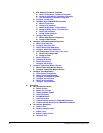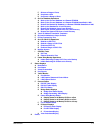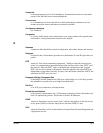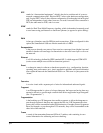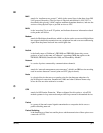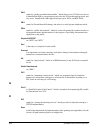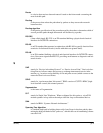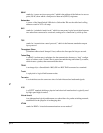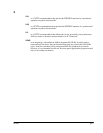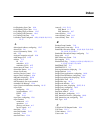
glo-6 SmartSwitch 1800 4.0 User Guide, Rev 01
IPL
stands for “initial program load,” which is the loading into a node of the operating
software on power-on or re-boot.
IPX
stands for “Internetwork Packet Exchange,” which is a Novell NetWare connec-
tionless protocol that defines internetwork and intranode addressing schemes.
L
LAN
stands for “local area network,” which is a network operating over short distances at
high speeds.
LCN
stands for “logical channel number,” which is used as an identifier for a virtual circuit
between a DTE and a DCE.
Level 2
is the link layer in the ISO (International Standards Organization) 7-layer OSI (Open
Systems Interconnect) reference model.
Level 3
is the packet layer in the OSI reference model.
Line Interface Card
is a “daughter” card mounted in a SmartSwitch 1800, and containing the components
that support the two Voice ports.
LLC
stands for “logical link control,” which is the third layer in the three-layer ISO LAN
protocol hierarchy. (The first two layers are Physical and MAC; MAC is described in
this glossary.) LLC is responsible for addressing and data link control.
LLC2
is a type of LLC that requires establishment of a connection before information can be
exchanged. (The other type of LLC is LLC1, which does not require a connection.)
Logical Channel
is a logical link between node and subscriber, on which calls are sent or received. The
physical line between devices may have a number of logical channels (also called
LCNs).
Logical DCE/DTE
see “DCE” and “DTE.”
LPDU
stands for “LLC protocol data unit,” which is the unit of information exchanged
between link stations in different nodes. The LPDU consists of destination service
access point (see “DSAP”) and source service access point (see “SSAP”) address
fields, a control field, and (optionally) information fields.



